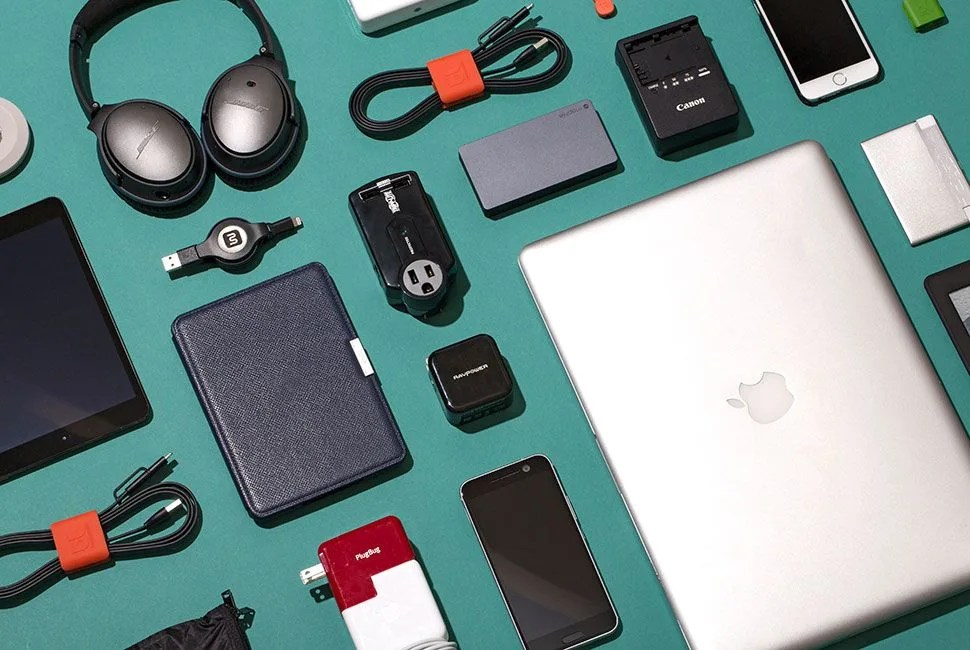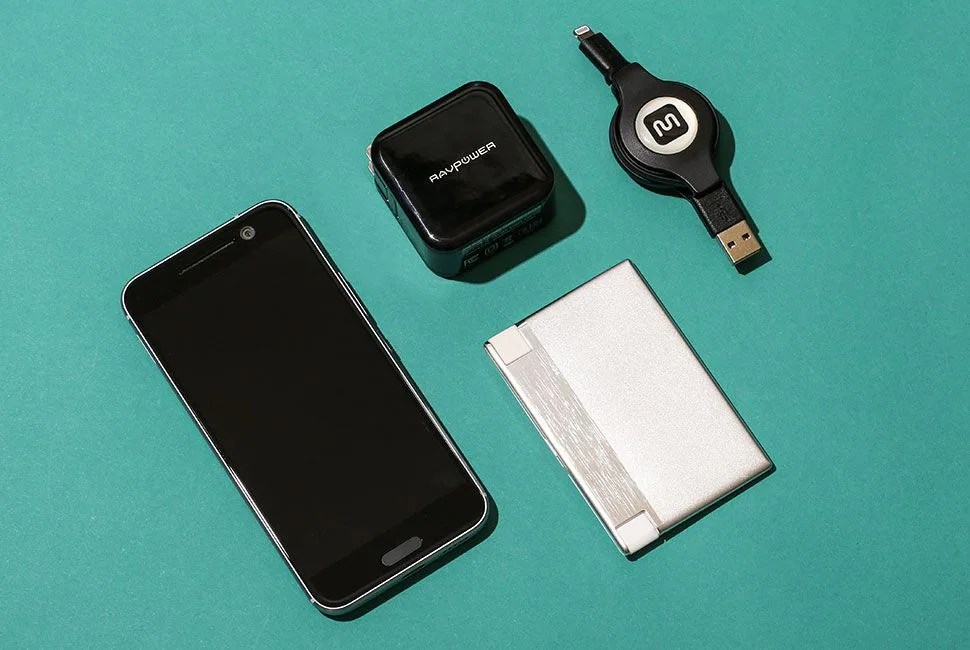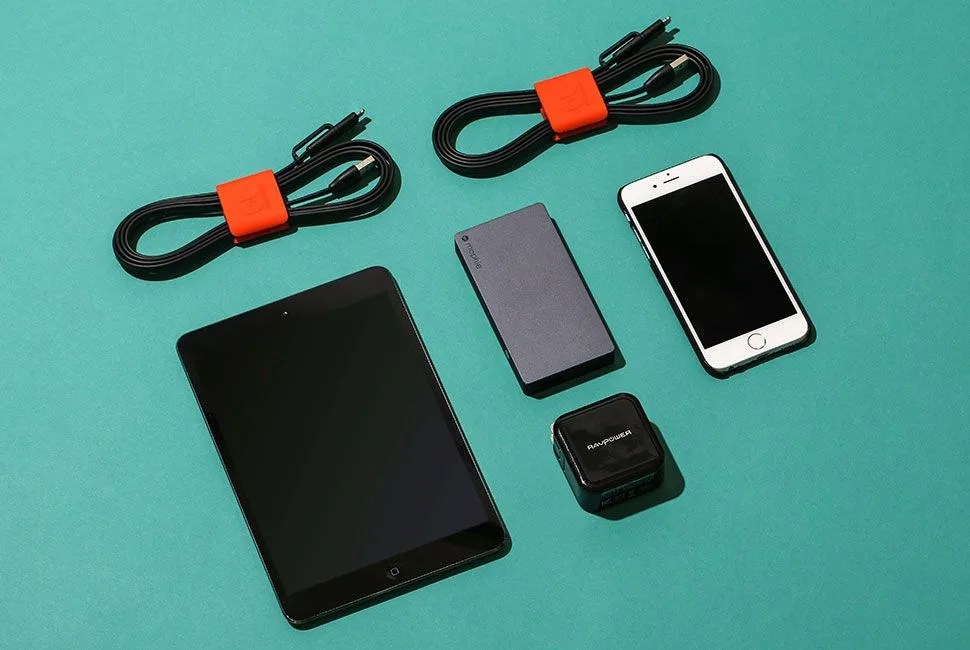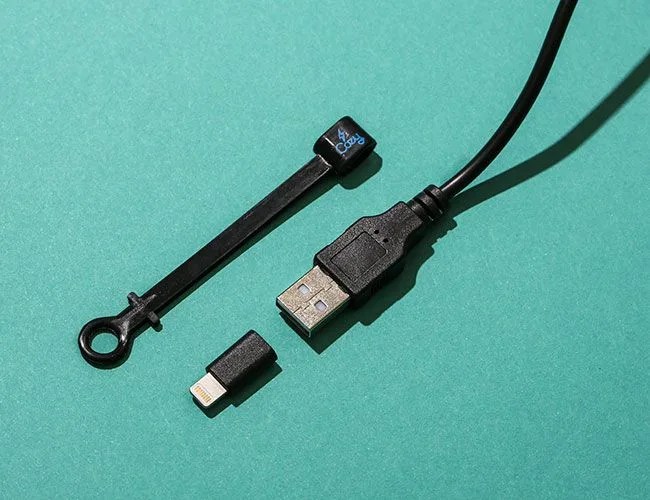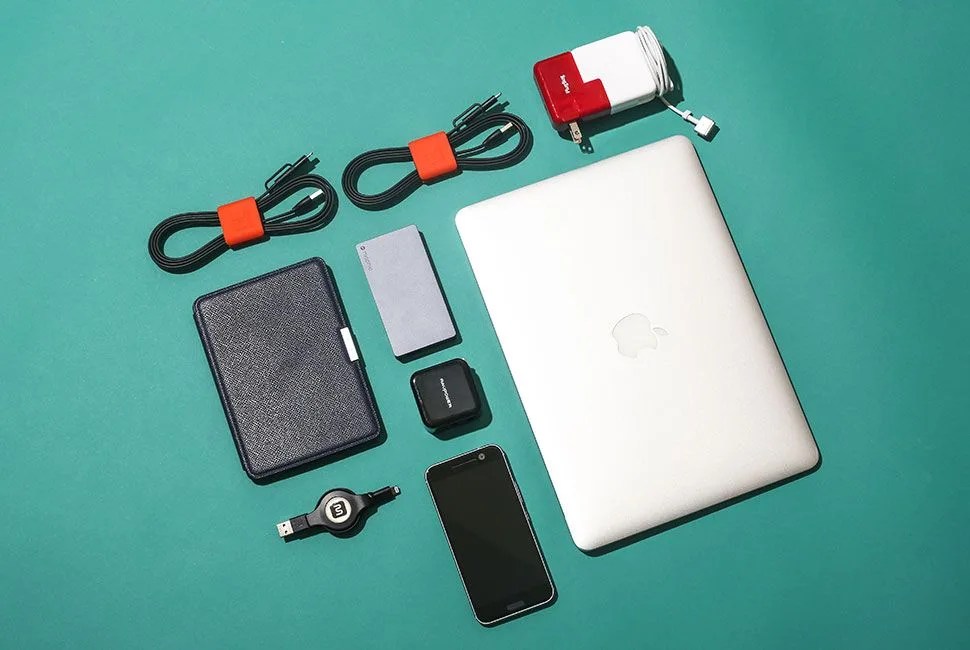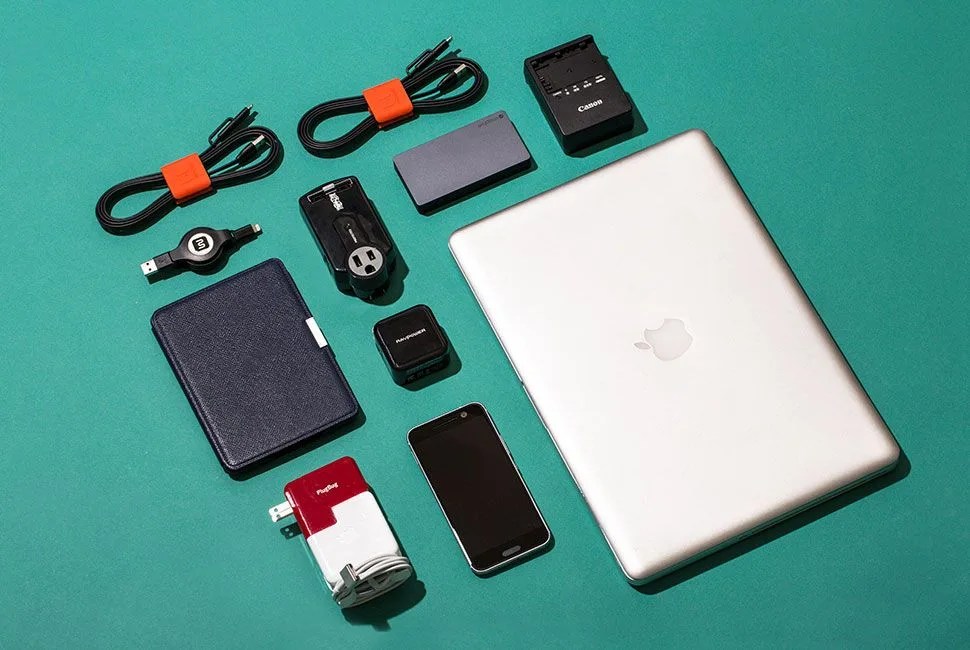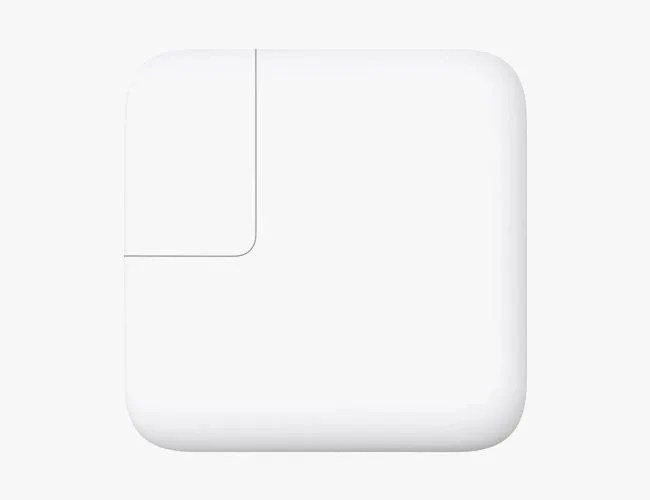It took me nearly a decade of considerable travel before I realized that packing the standard chargers and cables that come prebundled with gadgets is a waste of wall outlets, bag space and, most importantly, time. The charging kits below can help you avoid a decade’s worth of mistakes. They’re designed for the common gadget combinations most of us bring on the road, and they’re tailored to meet my three personal goals for what constitutes the ideal charging setup.
The Perfect Charging Kit Must…
1. Charge all devices at the same time if necessary, as fast as possible.
2. Use a minimal amount of cables and power converters.
3. Need a max of only two free outlets.
But before moving on to the gear, it’s important to know what separates the best third-party charging accessories from the rest of the field.
The basic thing to know is this: more amps equals faster charging, up to a point. A proper schooling on this topic would dive into the technical definitions and relationships between voltage, current and power, as well as the importance of battery “C-rates,” but that knowledge isn’t fully necessary to leverage quality charging. Thankfully the tech industry has standardized the USB specification enough now that the risk of melting your gadget by mating it with the wrong USB charger is essentially zilch. So, we’ll skip the full physics lesson and take on the role of gym teacher instead (no offense, coach).
And What About Quick Charging?
Many newer Android devices like the LG G5 ship with some form of “quick,” “rapid” or “fast” charging feature. All of the standards operate on the same principle outlined in this guide. Newer phones are capable of drawing higher current levels from power supplies, allowing them to charge faster when paired with power supplies that are certified to output higher currents. Plenty of third-party chargers on the market today support these standards, but I chose to ignore them for now given how quickly these features are evolving and improving. If you’d like more details on chargers that support quick-charge technology, make sure to check out The Wirecutter’s suggestions.
The speed at which a battery charges depends on the amount of current delivered to it (measured in amps) via the power source. Generally, the more amps a charger delivers, the faster a battery can charge, within limits. That’s because all devices have a maximum current they’re capable of accepting. The goal of any perfect charging setup is to pair your device with a power supply that’s capable of outputting a gadget’s maximum acceptable current.
For example, any iPhone since the 6 can draw power at a variety of current levels ranging from .5 amps up to 2.1 amps. The same rough range holds true for basically every other modern smartphone, too.
